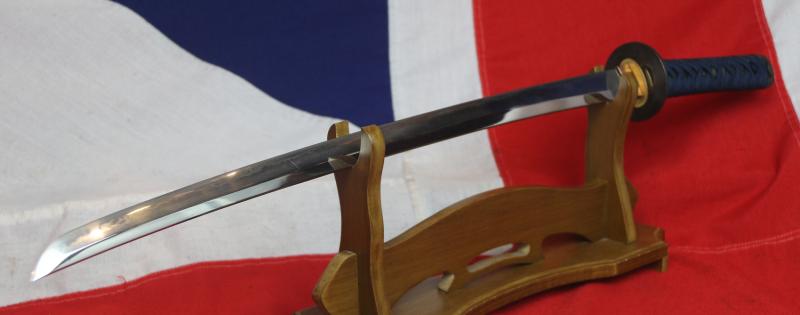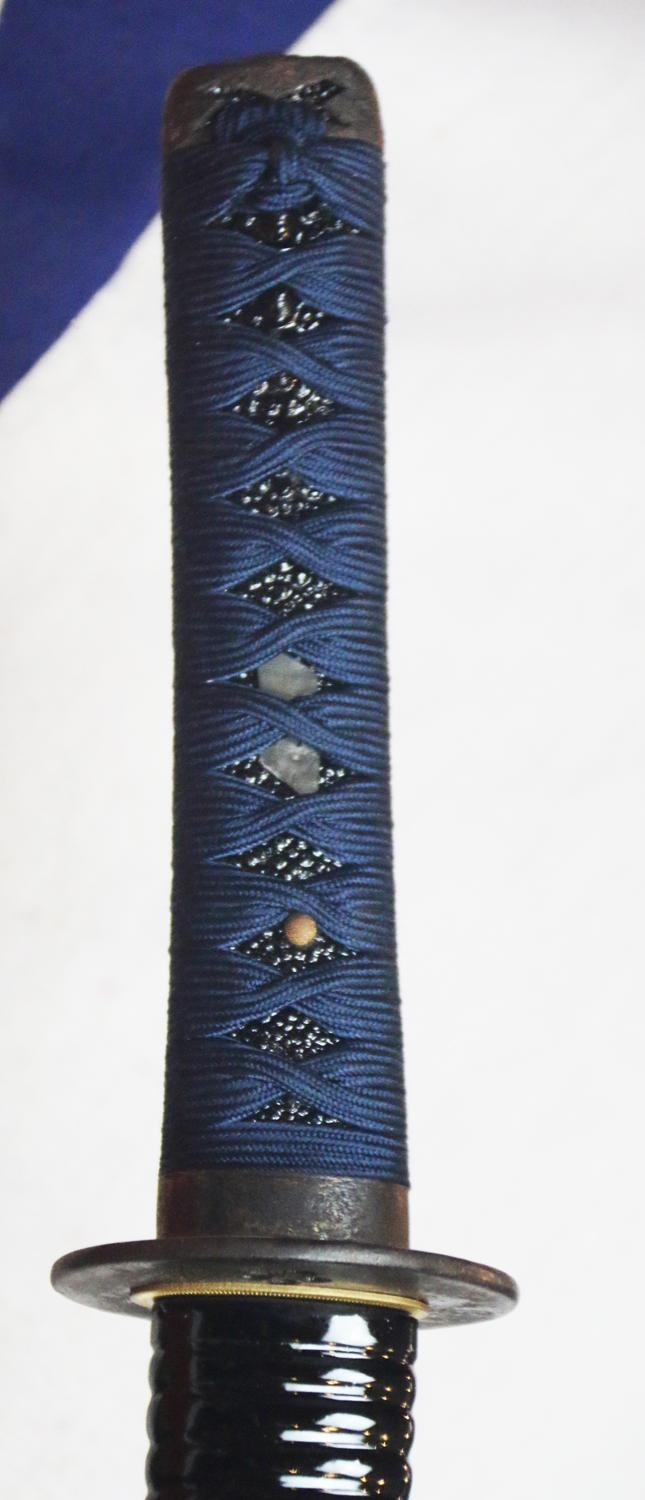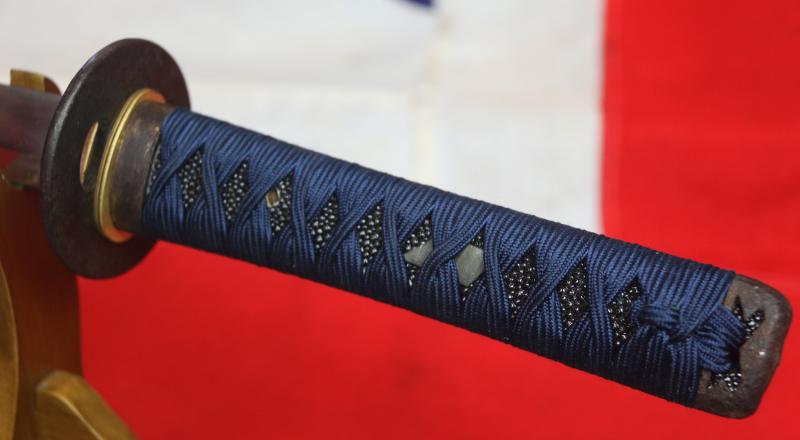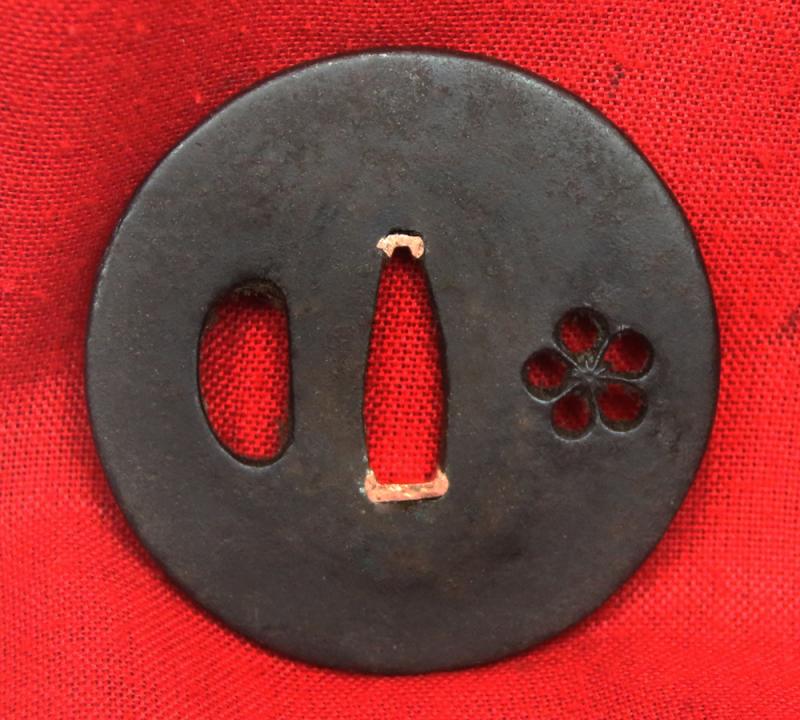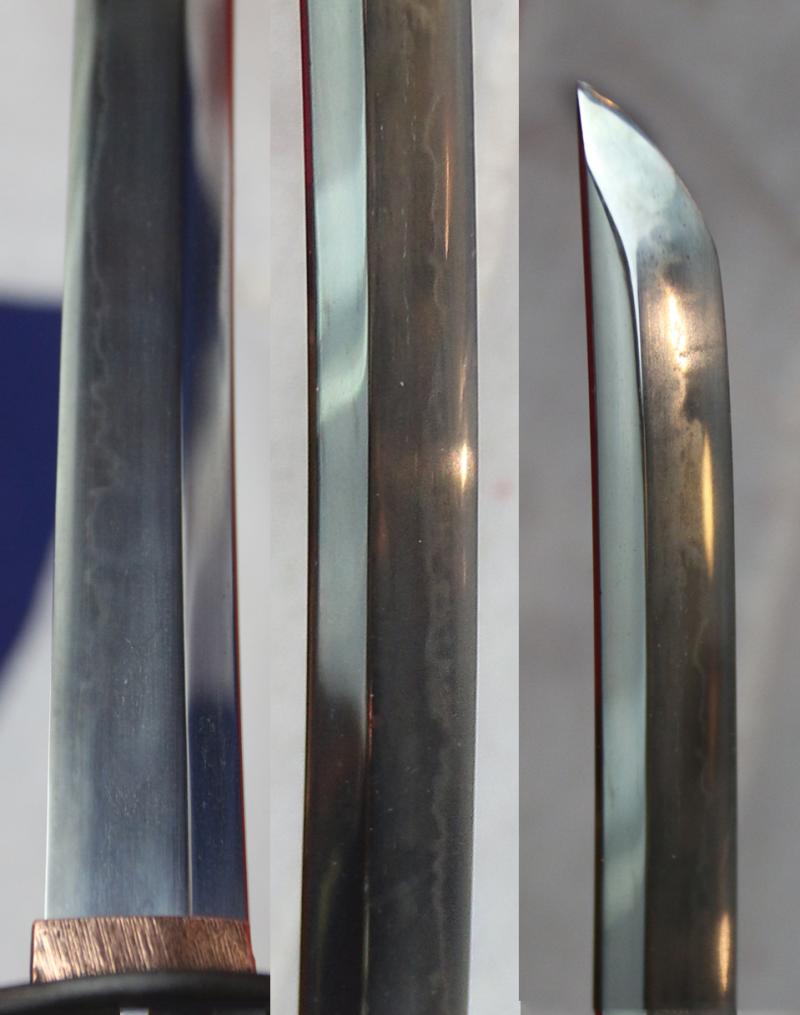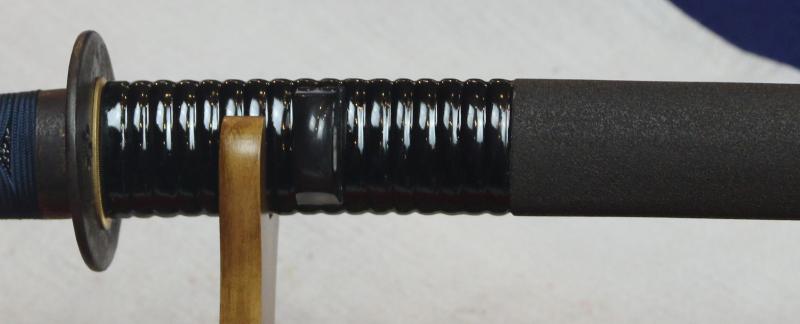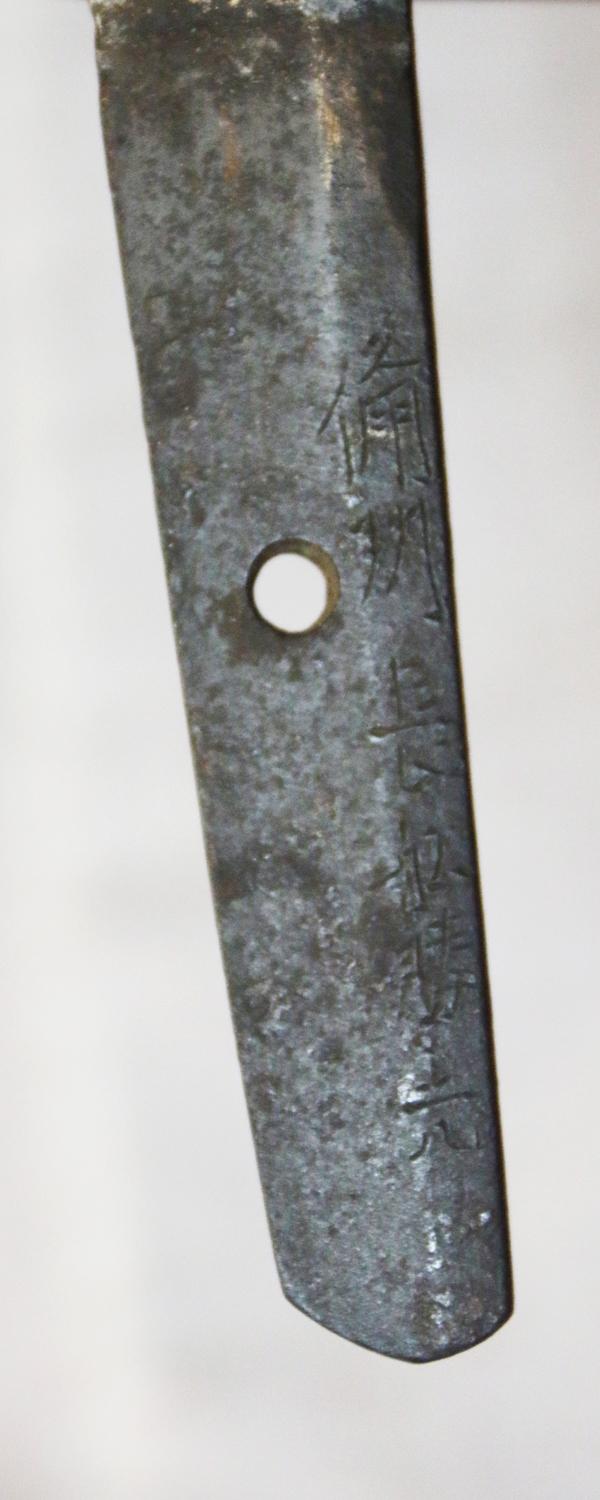A Most Handsome & Original Fine Chisa Katana Samurai Sword Signed Bishu Osafune Kiyomitsu. (備州長船清光)Koto Period – Muromachi Era. Around 475 years Old
With original Edo period Higo school fuchi kashira an iron plate mon-sukashi tsuba, with good hand made suaka sekigane within the nakago-ana {inserted soft metal copper fillets} and a stunning urushi bright lacquer ribbed and ishime two stage Edo saya, with polished buffalo horn kurigata and sayajiri, and fine blue silk tsuka-ito. The fine blade has a beautiful active notare hamon.
Likely late Muromachi period (1558-1570: Eiroku Era)
Based on the signature on this blade, we believe it was possibly forged by the second-gen Kiyomitsu, who was the son of Goro Zaemon Kiyomitsu. The second-gen Kiyomitsu was active in sword-forging during the Eiroku era(1558-1570: Late Muromachi period). While a few swordsmiths signed as Kiyomitsu during the mid-late Muromachi period, the second-gen Kiyomitsu is one of the most famous ones. Kiyomitsu belonged to Bizen Osafune school.
Those who forged swords in the Bizen province(Okayama prefecture) at the end of the Muromachi Period(1492-1569 A.D) are called Matsu Bizen (Matsu means the end). Kiyomitsu school was one of the most famous schools.
It flourished for generations among Osafune schools(The head branch) under the auspice of the Akamatsu clan. There were various styles forged by the generations of Kiyomitsu during this period.
Bizen is the birthplace of Bizen Den, one of the most famous Japanese sword traditions, along with Yamashiro Den, Soshu Den, Mino Den, and Yamato Den.
The swordsmiths in Bizen produced many swords for feudal lords during the Muromachi period as it was in the middle of the Sengoku period(Warring state period). The demand for blades increased among strong feudal lords. It would be nice to have a piece forged in the warring state period when there was so much rivalry between warlords.
This blade comes with beautiful sword mountings, including the usual tsuba, menuki, and fuchi kashira.
The Muromachi period or Muromachi era (室町時代, Muromachi jidai), also known as the Ashikaga period or Ashikaga era (足利時代, Ashikaga jidai), is a division of Japanese history running from approximately 1336 to 1573. The period marks the governance of the Muromachi or Ashikaga shogunate (Muromachi bakufu or Ashikaga bakufu), which was officially established in 1338 by the first Muromachi shōgun, Ashikaga Takauji, two years after the brief Kenmu Restoration (1333–1336) of imperial rule was brought to a close. The period ended in 1573 when the 15th and last shogun of this line, Ashikaga Yoshiaki, was driven out of the capital in Kyoto by Oda Nobunaga.
From a cultural perspective, the period can be divided into the Kitayama and Higashiyama cultures (later 15th – early 16th centuries).
The early years from 1336 to 1392 of the Muromachi period are known as the Nanboku-chō or Northern and Southern Court period. This period is marked by the continued resistance of the supporters of Emperor Go-Daigo, the emperor behind the Kenmu Restoration. The Sengoku period or Warring States period, which begins in 1465, largely overlaps with the Muromachi period.
The chisa katana was also the shorter long sword of choice for the art of twin sword combat, using two at once in unison, a chisa katana and wakazashi, one in each hand, a form used by the great and legendary samurai Miyamoto Musashi who reportedly killed 60 men before his 30th birthday.
Miyamoto Musashi 1584 – June 13, 1645), also known as Shinmen Takezo, Miyamoto Bennosuke or, by his Buddhist name, Niten Doraku, was an expert Japanese swordsman and ronin. Musashi, as he was often simply known, became renowned through stories of his excellent, and unique double bladed swordsmanship and undefeated record in his 60 duels. He was the founder of the Hyoho Niten Ichi-ryu or Niten-ryu style of swordsmanship and in his final years authored the The Book of Five Rings, a book on strategy, tactics, and philosophy that is still studied today.
Code: 25458



